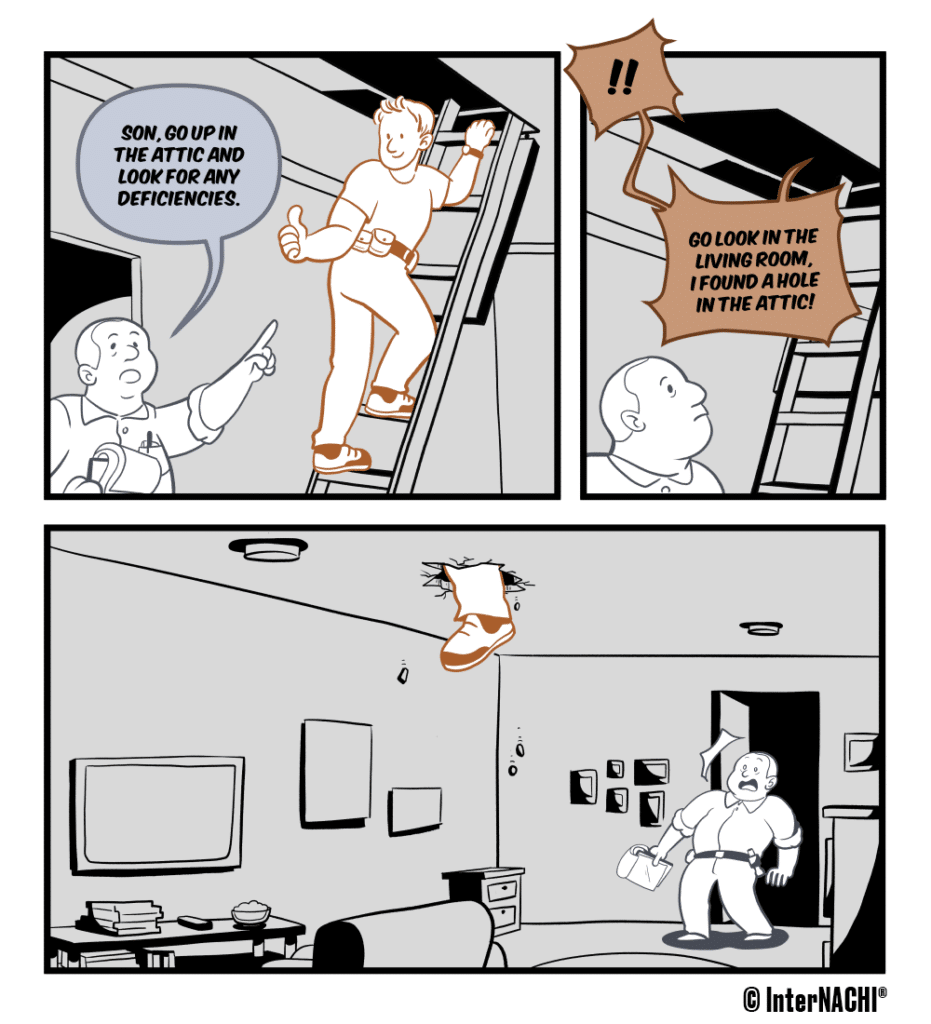Do you ever go into your attic? Are you aware of what is in your attic? Some attics are converted into a living space while others are used for storage of Christmas decorations. Attics are where we typically find a significant amount of attic insulation that helps to keep our home warm in the winter. In this post, we discuss what attic insulation is, why it is important, and the common types of attic insulation in your home.

What is Attic Insulation?
Attic insulation provides resistance to heat flow. It is typically installed in rolls called batts or blown in by a machine resulting in fluffy piles called loose-fill. R-value is the measurement metric for insulation. The R-value is the resistance to heat flow per inch of material. For instance, loose-fill fiberglass insulation has a R-value of 2.2-2.9 per inch. Loose-fill cellulose insulation has a R-value of 3.1-3.7 per inch. The greater the R-value then the greater the resistance to heat flow. So if one home has a total R-value of 50 in their attic then it is superior to a home that has a R-value of 20. Insulation is installed in between ceiling joists, on top of ceiling joists, and in some cases the insulation is installed in between roof rafters in cathedral style ceilings.
Why is Insulation Important?
Attic insulation helps to keep heat in your home in the winter time or out of your home in the summer months. Your heating system is constantly turning off and on in the winter time because warm air is leaving this house. Heating our homes cost money. So we install insulation that resists the movement of heat so that the heat stays in our home and increases our comfort level. With rising energy costs and focus on efficiencies, insulation provides cost savings to the homeowner. In addition, proper amounts of insulation help to prevent ice dams in cold climates.
Common Types of Attic Insulation
The most common types of attic insulation are cellulose and fiberglass. These insulations are blown in by machine and layered throughout the attic at a depth of six to fifteen inches. Fiberglass is often pink or white in color while cellulose is a dull gray color. Some attics contain fiberglass batt insulation in the joist cavities with loose-fill fiberglass or cellulose blown on top of the batts. Other insulations include rigid foam insulations and spray foam insulation in some applications.
Other types of attic insulation exist such as rock wool and even newspaper. An important type of insulation to be aware of is vermiculite. Some brands of vermiculite contains asbestos. Vermiculite appears different than fiberglass and cellulose. Vermiculite looks a lot like kitty litter and found in older homes. Read this link by the EPA (Environmental Protection Agency) to learn more about vermiculite insulation.
Conclusion
Attic insulation can improve the energy efficiency of your home. Insulation does have diminishing returns as you add more. For instance, if you have only 3 inches of insulation in your attic then you would benefit from adding more by lowering your heating costs. However, if you already have 15 inches of insulation you will not see as great of a difference if you add more insulation. Also, insulation resists conductive heat loss and not convective heat loss. Air can move through most insulation (convective heat loss) so it’s important to limit or prevent air movement between the living area of the home and the attic.
The Lask Inspection Group, LLC is a licensed home inspection firm in Rockford, IL. We hope these blog posts provide value to our readers. Click this link to read past blog posts on ways to maintain and learn about your home.
